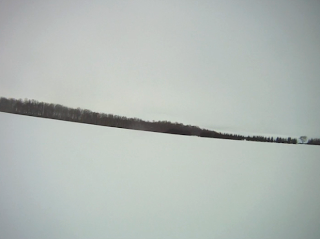We met Carali at Central St Martins School of art on 16th march 2011. The visiting group included Jaye Ho, Jaquie Utley, Jim Hobbs and Louise Colbourne.
Carali opened the talk with a performance. In pitch darkness we could hear a recording of Carali’s heart beat, as well as the live sound of Carali breathing deeply and steadily throughout, the performance lasted about 10 minutes. Carali also showed us video documentation of two performances of her running in difficult locations and extreme weather conditions. The out-come was in the form of footage from a camera which was strapped to Carali’s chest whilst she ran.
We then talked about the presentation of performance art and the authenticity of experience for the artist as well as the negation of the visual experience for the audience, amongst many other things....
Some of Carali’s thoughts after the visit were:
- Using sound and darkness - the body tries to measure the distance, type of space the body is in, and feels vulnerable.
- Communication between us = relates to our past experience.
- Where's the work going? ...trying to find ways to make a bodily presence with no visual.
- Movement and sound of the live body to make embodied artworks.
- Using actions that have a breaking point. The journey of the unexpected.

Carali McCall is an artist born in Canada, now living in London. She graduated from the Slade School of Art in 2006 with an MFA in sculpture, and is currently pursuing a practice-based PhD at Central Saint Martins, UAL on a research project titled ‘Marking Process: A Hybrid Model Between Drawing and Performance.’ Her practice explores an approach to drawing through duration and movement that tests the boundaries of her body. She works within a performative context developing an area concerned with expenditure, transmission and the reception. Operating in a field that draws from phenomenology, her practice discusses the extensions of the body and it's experience to time, questioning what constitutes marking as a drawing, and how does the ‘materiality’ of the body exist beyond its limits. In recent events, she has worked alongside other artists to perform long durational drawings, identifying a practice that responds, traces and records moving and marking as process. Some examples are drawing continuously with graphite for 3 hrs the diameter of her arm, or documenting the expenditure of running a marathon through the breath.